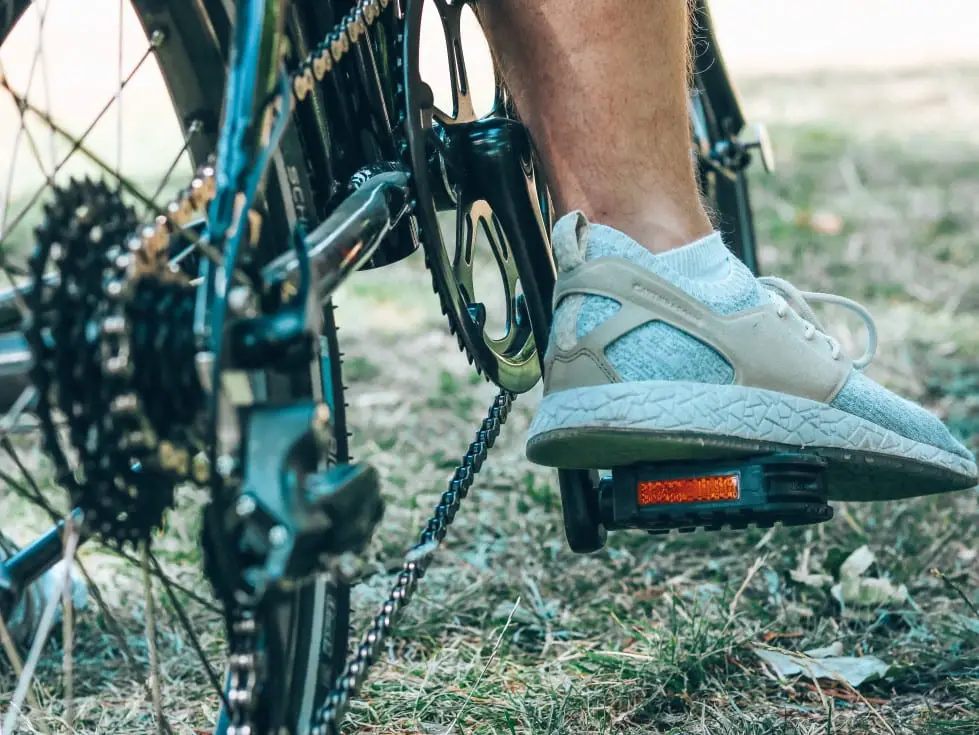If you want to get the most out of your bike, you need to get the measurement of your seat height right. Having the right saddle position and height makes your bike ride more enjoyable, comfortable, and safer. So, how high should my bike seat be?
Different methods in determining the correct saddle height
There are several methods available when it comes to establishing saddle height. We are not going to talk about all of them in this blog. Instead, we will focus on the three most used techniques:
The Heel Method
Although the least precise method of the three, the Heel method is used by several bikers because of its simplicity:
- Start by raising your bike saddle to the level of your hip.
- Sit down on the saddle and place the center of your heel to the center of the pedal while making sure that the crank arm is in line with your seat tube and is pointing down.
- Your saddle height is correct if you can extend your leg without any discomfort or without overextending your knee.
The Holmes Method
This method in determining your saddle height puts into account the way you put your feet on the pedals. Because of this, the Holmes method is considered to be the most precise of the three techniques in this blog.
According to the Holmes method, the ideal knee angle when pedaling should be between 25 to 35 degrees. This value represents the difference between your upper and lower leg while your bike pedal is at its lowest position.
You will need a bike roller if you want to use the Holmes method to determine your saddle height.
- Mount your bike to the roller and ride slowly.
- Film yourself from the side as you pedal for a minute or more. You can ask a friend to film you. If you are alone, just use a tripod to hold the camera in the right position.
- Study the recording. Pause the video when your pedal is at its lowest point.
- Measure the angle with a set square.
If the angle difference is more than 35 degrees, raise your saddle. Lower your saddle a bit if the angle difference is less than 25 degrees.

The 109% Method
The last but certainly not the least is the 109% method. Compared to the Heel method, this technique in measuring how high your bike seat should be gives a more precise result.
- Clamp a thick book between your legs and stand against a wall.
- Pull the book upwards until it becomes uncomfortable.
- Mark the top of the book on the wall. Do the process again to make sure you’ve marked the right position.
- Your inseam is the distance of the mark from the ground in millimeters.
- To get your saddle height, simply open your calculator app and multiply your inseam by 109%.
The horizontal position of your saddle matters too
Aside from your bike seat height, it’s also important to know the correct horizontal position of your bike seat. This measurement is called the setback and it’s used to determine whether or not your saddle is too far back or too far forward.
The best way to measure the setback of your bike seat is by using a plumbline.
- Hop on your bike and make sure that your pedals are horizontal.
- Drop the plumbline over the knee of your front leg.
- If your setback is correct, the plumbline should fall straight through the axle of your pedals. Move your bike seat back if it is too forward. Move it forward it is too far back.
Getting the right bike seat horizontal position is important if you want to get rid of problems like back pain. Ideally, your saddle should always be horizontal, not slanted.
Why getting the right bike seat height is important
A wrong bike seat height can cause a lot of problems. It can lead to muscle soreness, saddle sores, and joint pains. Most beginner riders set their bike height either too high or too low. Setting your saddle height too low can overwork your joints and burn your leg muscles especially when you are climbing. While setting your bike seat too high can pull your hamstrings, hyperextend your tendons, and even create problems in your Achilles and feet.
Below is a quick list of the most common injuries bikers experience because of a wrong saddle height and how you can fix them:
- Hamstring tendonitis – move your bike saddle forward and down in small increments until you are comfortable.
- Numbness – your saddle is too far back and you end up sitting on the nose most of the time. Move your saddle forward.
- Neck pain – move your saddle forward. This could be caused by your handlebar that sitting too low.
- Patellar tendonitis – raise the height of your bike seat a little and move it slightly backward.
Aside from comfort and handling, a correct bike seat height enables you to transfer power from your legs to your bike more efficiently with each pedal stroke — allowing you to cover more distance without experiencing fatigue.
Remember that none of the methods discussed in this blog post is perfect. If you are still having problems getting the right bike seat height on your own, consider asking a professional bike fitter for help.
Happy biking!









